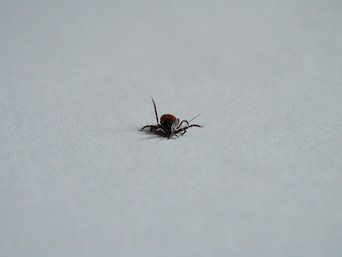Lyme Disease Cases to Skyrocket This Year
The United States is already seeing a major increase in the number of Lyme disease cases in both humans and dogs this year. Researchers believe mice may be behind this influx of infections.

Lyme disease is catching a lot of buzz in the news recently as more and more states report rapidly increasing numbers of Lyme disease cases. The forecast for this year is looking very murky for the northeast region of the country where ticks thrive.
In North America, Lyme disease is caused by the spirochetal bacterium Borrelia burgdorferi and can be transmitted to both humans and animals through infected black-legged ticks (Ixodes scapularis; also known as deer ticks). The most commonly infected animal, though, is the dog.
Mice as Transmitters
Researchers believe this winter’s wet and warm conditions have been a factor in the increase of Lyme disease cases, but they believe mice play a role as well.
Mice are the culprits that infect the black-legged tick population with Lyme disease. Ticks love feeding on mice, and mice infect up to 95% of ticks that feed on them. (A single mouse in a northeastern forest may be found with upwards of 100 ticks covering its face and ears.)
Last year, researchers observed a “mouse plague” where the number of mice running around the forest in the summer was far higher than in previous years. According to a report in Ecological Applications, this number correlates to the number of Lyme disease cases the following summer.
Seeing as there was a “mouse plague” in 2016, researchers were warned early on that there would be a Lyme plague in 2017.
Spreading the Disease
While Lyme disease is more prevalent in the north than the south, it is found in more than 260 countries and that list continues to grow.
"What's important for people to know is that the ticks are spreading to new areas—and tick-borne diseases are coming with them,” said epidemiologist Kiersten Kugeler from the Centers for Disease Control and Prevention (CDC).
Because of the expanding environment of black-legged ticks, no matter where you live it is important to understand the nuances of Lyme disease and tick prevention in both people and dogs.
Ticks usually must attach and feed for 24 to 48 hours before Lyme disease transmission can occur. Clinical Lyme disease is a less common outcome of infection in dogs than in humans—only about 5% of exposed dogs develop clinical signs of Lyme disease. Some common signs in dogs are fever, lethargy, anorexia, depression, lameness, joint swelling, polyarthritis, and/or lymphadenopathy.